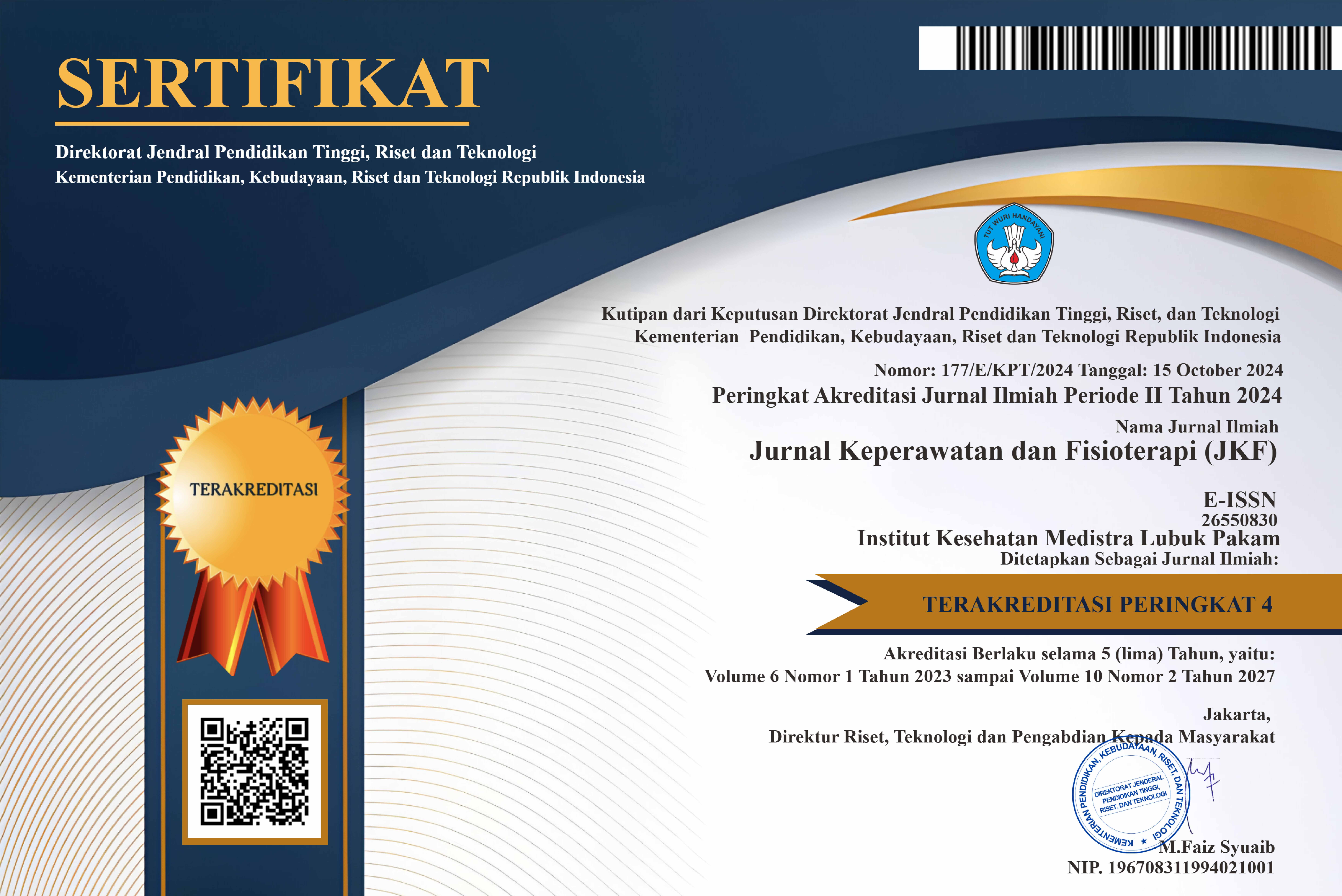The Relationship Between Worm Infections and Selenium Intake In Children In The Working Area Of Tabaringan Health Center Makassar City
DOI:
https://doi.org/10.35451/jkf.v6i2.2023Abstract
Background: Worm infection is one of the health problems in Indonesia. Worm infections can disrupt nutrient requirements, hinder growth, intellectual development, and affect the immune system, making the body susceptible to other diseases. Selenium is a micronutrient with great potential to influence the immune system. The mechanism of action of selenium includes antioxidant activity, protecting against oxidative damage, maintaining the integrity of the intestinal mucosa, and anti-apoptotic function in the large intestine. Selenium can enhance the host's immune response by increasing the activity of Alternative Activated Macrophages (AAM), which are the main macrophages in fighting intestinal parasitic worms. Research Objective: To determine the relationship between worm infections and selenium intake. Research Method: Analytical research using a cross-sectional approach. Sampling was done using total sampling technique on elementary school children in the Tabaringan Health Center working area in Makassar City, aged 7-9 years. Research Results: The frequency distribution of positive worm infections was 22.2%, equivalent to 8 samples, and negative worm infections were 77.8%, equivalent to 28 samples. Adequacy of selenium intake in the samples showed 16.7% inadequacy, equivalent to 6 samples, and 83.3% adequacy, equivalent to 30 samples. The analysis of the relationship between worm infections and selenium intake yielded a P-value = 0.151. Conclusion: There is no relationship between worm infections and selenium intake in children in the Tabaringan Health Center working area in Makassar City.
Downloads
References
Aprilianti, H. (2019). Hubungan antara asupan selenium dengan infeksi soil transmitted helminth pada anak Sekolah Dasar kelas VI.
Aries, A. (2012). Upaya Pemberantasan Kecacingan di Sekolah Dasar. Makara Journal of Health Research, 16(2), 65–71.
Avery, J. C., & Hoffmann, P. R. (2018). Selenium, selenoproteins, and immunity. Nutrients, 10(9).
Fetana, I. N. (2018). Hubungan antara asupan vitamin A dengan infeksi soil transmitted helminth pada anak Sekolah Dasar (pp. 5–16).
Fong, D., & Chan, M. M. (2022). Soil-Transmitted Helminth Infections. In Human Parasites (pp. 502–527). WORLD SCIENTIFIC.
Hardjanti, A., Rachmawati, P., Desiyanti, T., Rahman, R., Yudi, W., & Farellina, Y. (2018). Prevalensi dan Tingkat Infeksi Soil Transmitted Helminths Dihubungkan dengan Golongan Usia dan Jenis Kelamin pada 5 Sekolah Dasar. Majalah Kesehatan Pharmamedika, 9, 86.
Irwan, M. I. K., Fattah, N., Arfah, A. I., Esa, A. H., Laddo, N., & B, E. S. N. (2022). Faktor Risiko Infeksi Kejadian Kecacingan pada Anak Usia Sekolah di Wilayah Kerja Puskesmas Panambungan Makassar. Jurnal Mahasiswa Kedokteran, 2(5), 359–367.
Kusmana, F. (2017). Selenium?: Peranannya dalam Berbagai Penyakit dan Alergi. Cdk-251, 44(4), 289–294.
Martila, M., Sandy, S., & Paembonan, N. (2016). Hubungan Higiene Perorangan dengan Kejadian Kecacingan pada Murid SD Negeri Abe Pantai Jayapura. Jurnal Plasma, 1(2), 87–96.
Mirdayani, E., Puspitasari, I. M., Abdulah, R., & Surbanas, A. (2019). Selenium sebagai Suplemen Terapi Kanker: Sebuah Review. Indonesian Journal of Clinical Pharmacy, 8, 301.
Nolitriani, N. (2020). Peran Selenium Pada Diare Akut. Jurnal Ilmu Kesehatan Indonesia, 1(2), 1009–1015.
Permenkes RI. (2017). Penanggulangan Cacingan. Peraturan Menteri Kesehatan Nomor 15.
Pratama, M. Y., & Cahyono, J. A. (2023). Hubungan Infeksi Kecacingan Soil Transmitted Helminth (STH) Dengan Jumlah Eosinofil Pada Anak Sekolah Dasar Di Sdn Teluk Selong Kabupaten Banjar. Jurnal Labora Medika, 7, 62–70.
Rahma, N. A., Zanaria, T. M., Nurjannah, N., Husna, F., & Putra, T. R. I. (2020). Faktor Risiko Terjadinya Kecacingan pada Anak Usia Sekolah Dasar. Jurnal Kesehatan Masyarakat Indonesia, 15(2), 29.
Roman, M., Jitaru, P., & Barbante, C. (2014). Selenium biochemistry and its role for human health. Metallomics, 6(1), 25–54.
Tapiheru, M. J. R., & Zain, N. (2021). Prevalensi Infeksi Soil Transmitted Helminth Pada Murid Sekolah Dasar Negeri 105296 Kecamatan Percut Sei Tuan, Kabupaten Deli Serdang, Sumatera Utara. JIMKI: Jurnal Ilmiah Mahasiswa Kedokteran Indonesia, 8(3), 1–7.
Downloads
Published
Issue
Section
License
Copyright (c) 2024 Shafa Nathania Utami, Nesyana Nurmadilla, Eny Arlini Wello, Santriani Hadi, Sidrah Darma

This work is licensed under a Creative Commons Attribution 4.0 International License.
Copyright in each article is the property of the Author.


























